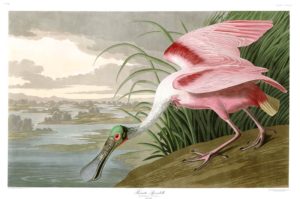Travel with Geoffrey Baer to explore the heart of Cuba’s magical capital city, now open to Americans after more than 50 years. Three young locals—architect and restorationist Daniel de la Regata; Irene Rodriguez, one of Cuba’s top flamenco dancers; and Grammy-nominated jazz pianist Roberto Fonseca—serve as enthusiastic guides, allowing viewers to experience this vibrant and historic place through the eyes of those who love it and call it home.
Welcome to Weekend in Havana.
Geoffrey, host of the PBS series 10 That Changed America about game-changing buildings, homes, parks, and towns as well as more than 20 specials on Chicago history and architecture, takes to the streets of Havana with his guides and new fast friends, Daniel, Irene and Roberto.
After meeting up at a café in Cathedral Plaza in Old Havana, he is given a whirlwind tour of Cuba’s fascinating and colorful history, a hands-on introduction to Afro-Cuban music and dance, a primer on Havana’s varied architecture and efforts being made to restore many of the city’s ruins, and an inside look at how everyday Cubans live in this “old city trying to find its place in the modern world,” a land off-limits to Americans for decades.
Guided by his new friends, Geoffrey witnesses the nightly firing of the cannon at the fortress of San Carlos de la Cabana; visits Plaza de Armas, the city’s first public square; rides in a ’50s-era red Chevrolet on a journey through Havana’s breathtaking but sometimes crumbling architecture; and meets an auto mechanic charged with keeping many of Havana’s vintage automobiles in running order. He also takes a wild ride in a “coco taxi,” a small yellow vehicle sans seatbelts that looks like a coconut, and gets an overview of the vivid local arts scene, which includes street musicians along El Malecón’s crowded sea wall. He dines in one of the city’s many paladars (intimate family restaurants in what were once private homes), and hobnobs with the fashionable young crowd at La Fabrica, a series of art galleries, bars and performance spaces located in an old factory.
Geoffrey also visits a ruined sugar plantation where African slaves once toiled and takes part in a present-day Santeria ritual in a private home. From Roberto and his band, Geoffrey gets a quick tutorial on Afro-Cuban percussion at the famous Studio Areito, one of the oldest surviving recording studios in the world. After a visit to the U.S. Embassy, Geoffrey watches young athletes taking part in America’s and Cuba’s joint national pastime, baseball, unearths some reminders of the turbulent Cuban Revolution era, and is granted rare access to one of Havana’s most important restoration projects: El Capitolio, Cuba’s Capitol building, modeled after the U.S. Capitol in Washington, D.C. He also imbibes at one of Ernest Hemingway’s favorite watering holes and boats out to the small fishing village of Cojimar, the setting for The Old Man and the Sea, and visits Hemingway’s home in San Francisco de Paula.
Geoffrey checks out the glitzy floorshow at the Tropicana nightclub, and ends his journey at La Guarida’s rooftop piano bar, perched atop a crumbling mansion. With Roberto’s band playing in the background, he reflects on the new understanding he has gained of Havana.

 We turn the spotlight onto two must-have documentaries on DVD: Public Media Distribution’s Audubon (available June 20) and PBS Distribution’s American Masters: Alice Waters and Her Delicious Revolution (now available).
We turn the spotlight onto two must-have documentaries on DVD: Public Media Distribution’s Audubon (available June 20) and PBS Distribution’s American Masters: Alice Waters and Her Delicious Revolution (now available).

